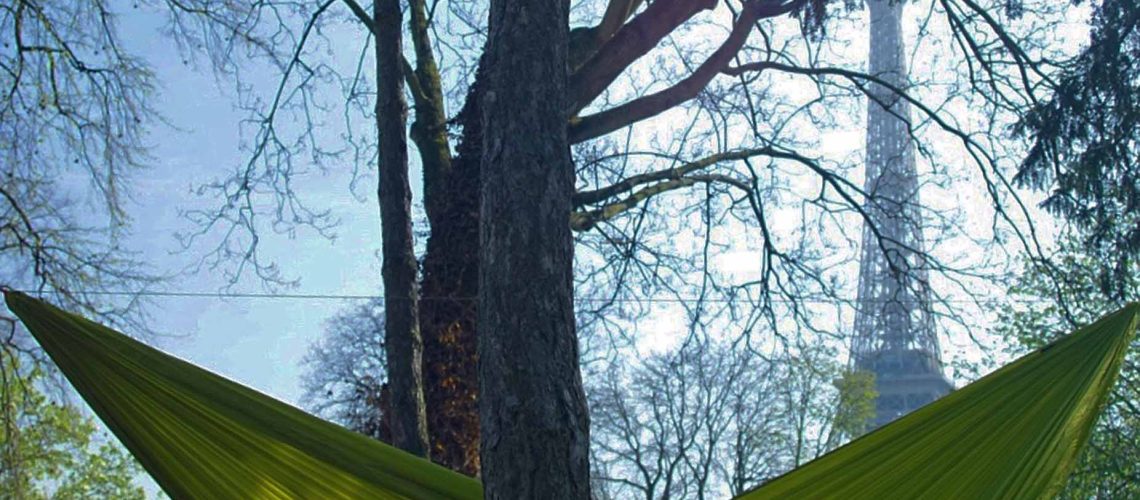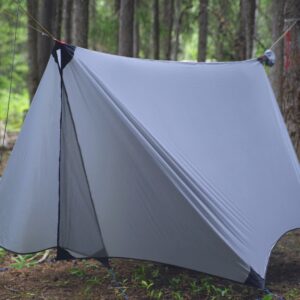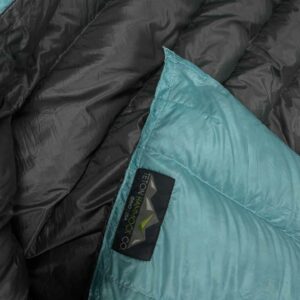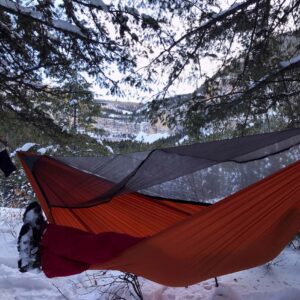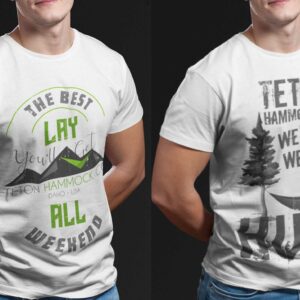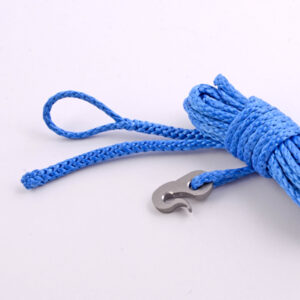Much of this depends on the weather you expect to be camping in. If you are camping in colder climates, you definitely need a hammock tarp. If you’re camping in the spring or summer, it’s a good idea to have a hammock equipped with a bugnet to keep mosquitos and other bugs off of you while you sleep.
There is a wide variety of camping hammocks to choose from, as well as accessories that will accommodate you on your trip.
With Teton Hammock Company, you can customize your camping hammock gear with your exact color specifications—go hammock camping in both comfort and style!
What You Need
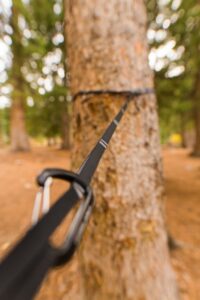 Your camping hammock
Your camping hammock- The suspension system
- Insulated underquilt or a sleeping pad
- A hammock tarp if the weather calls for it
- Bug netting (many of our camping hammocks have retractable bug nets)
The good news is that you can find all of that on our website and get it all in one single package.
Setting It Up
Finding The Right Spot
One of the great things about camping hammocks is that they offer far more options on where you can camp than tents. You don’t have to worry about bumpy ground, rocks, or insects. Instead, you can choose some fun, creative places to set up. Just be sure to remember to:
- Make sure camping hammocks are allowed in the place you’re camping;
- Examine the trees closely, checking for sensitive plant life and habitats like hazardous insect nests and poisonous plants, and making sure the trees of your choice are strong enough to hold you up;
- Avoid pathways used by people and/or animals.
Honing Your Geometry Skills
Camping hammocks that are too flat or bent are usually uncomfortable, so it’s best to set up the straps at an angle of about 30-degrees toward the tree.
Also, make sure that the low point of the hammock is no higher than 18 inches off the ground.
How To Sleep Comfortably In Your Camping Hammock
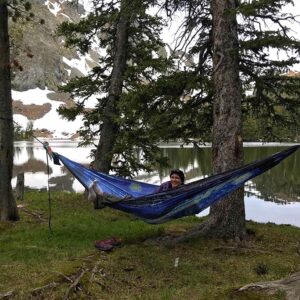 Get the right pillow. While many are perfectly comfortable using the lip of the hammock as a headrest, this may not work for you, so experiment with different sized pillows until you find what works best for you.
Get the right pillow. While many are perfectly comfortable using the lip of the hammock as a headrest, this may not work for you, so experiment with different sized pillows until you find what works best for you.- Lie (slightly) off kilter, as this will allow the fabric to flatten out to the point that you don’t feel like you’re being swallowed up by your camping hammock.
- Store your essentials in a safe place. The same principle applies here as with a tent—if you’re camping in an area with bears and other potentially dangerous wildlife, it’s not a good idea to have certain foods or snacks in your hammock with you. That said, if you’re certain you’re in a safe place, you can always store nighttime necessities in a gear sling setup within arm’s reach, or possibly under your hammock (this works especially well if you have a hammock tarp set up, which is like having a floating tent under which you can store food, accessories, boots, and your pack).

